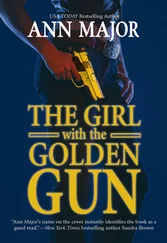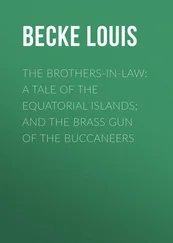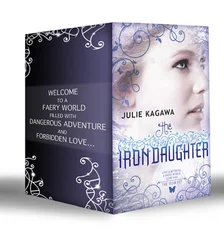Erik Larson
LETHAL PASSAGE
THE STORY OF A GUN
How the Travels of a Single Handgun Expose the Roots of America’s Gun Crisis
For all children who have
faced a gun
The essential American soul is hard, isolate, stoic, and a killer.
—D. H. LAWRENCE
ON A BITTER, COLD DECEMBER MORNING, a sixteen-year-old boy walked into the Atlantic Shores Christian School in Virginia Beach, Virginia, with a semiautomatic handgun and several hundred rounds of ammunition tucked into his backpack. His name was Nicholas Elliot. By midmorning, a forty-one-year-old teacher had been shot dead, and another teacher, struck by two nine-millimeter bullets fired at point-blank range, was extraordinarily lucky to be alive. Two other teachers narrowly escaped Nicholas’s bullets. One found herself running a zigzag pattern through the schoolyard as Nicholas fired round after round at her back. The other, a man who tackled Nicholas and saved the lives of a roomful of crying and praying teenagers, felt a bullet breeze past his head.
In a nation accustomed to murder in large multiples, the shootings received little out-of-state coverage. A single homicide barely rates mention beside the events at Stockton and San Ysidro, two names that ring of casual mass violence the way the names of great battlefields ring of valor. But the story of how that gun wound up in Nicholas’s backpack, how the gun came to exist at all, constitutes a cultural detective story that tells a great deal about the roots of America’s gun crisis. Nicholas in effect carried with him the good wishes of an industry and a culture whose institutions and mores have helped make the things he did that morning so commonplace in America.
Nicholas carried a gun—the Cobray M-11/9—that by any reasonable standard should never have become a mass-consumer product. He acquired the gun from a federally licensed dealer using a means that puts thousands of guns into the hands of illegal users each year, yet that existing federal gun-trade regulations do much to encourage. This dealer was a “good” dealer, yet sold numerous weapons to traffickers and killers, raising a fundamental question of whether the costs imposed on the rest of us even by supposedly honest dealers are simply too high for society to bear. Moreover, Nicholas carried with him a cultural bloodlust fed by marketers and their close allies in the gun press who routinely play to America’s homicide fantasy and stoke our widespread belief in the gun as problem-solver.
None of this, of course, absolves Nicholas of his own responsibility for what occurred at Atlantic Shores, nor does it absolve society at large of its responsibility for the mass disenfranchisement of America’s underclass, in particular young black men. Clearly, individual responsibility and socioeconomic tension are the tectonic plates that shape crime. As one gun buff proposed to me, half in jest, the way to reduce crime is to buy back guns not with cash, as many cities have tried, but with jobs.
What follows, however, is not so much the story of Nicholas Elliot, but rather of his gun and its travels. I set out to trace his weapon from the moment its design was conceived to its use at Atlantic Shores as a way to explore how guns migrate from the so-called legitimate gun-distribution network to the hands of killers, robbers, and inner-city gangsters. Every gun used in crime starts out in that network, but somewhere along the way gets diverted. But where and how? These questions get lost amid the daily reports of shootings and the numbing tallies of lives lost each year. Pick up a copy of a major newspaper and you see story after story about gunshot death and injury, but you rarely read where the gun came from or how it was acquired. The absence is understandable. Although television cop shows would have us believe otherwise, it takes a lot of effort for the police and the Bureau of Alcohol, Tobacco and Firearms to trace the origins of a gun, largely because of obstacles deliberately inserted into the process by federal law. When a crime has just occurred—that is, when the news is fresh and most marketable—no one can know for sure exactly how the gun reached the shooter. The shooter himself may not know how many others handled the gun before it came into his possession. Some guns simply cannot be traced. By the time the police do learn where and how a gun originated, the shooting is already old news. Yet by tracing the migration of guns, one comes readily and vividly to understand where the nation’s current patchwork of gun controls have gone astray, and how easily they could be fixed to the increased satisfaction of gun owners and gun opponents alike.
I chose a single gun, used in a single homicide—not even a terribly lurid homicide—primarily as a means of cutting through the rhetoric of extremists on both sides of the gun debate. Guns are a subject that too often divides America into warring camps, even though the beliefs of the great, moderate mass of Americans, whom we too readily classify in combat taxonomy as pro-gun and antigun, gun nut and gun hater, simply aren’t that deeply opposed. Somewhere along the line, extremists on both sides succeeded in shaping the debate so that no one has a choice but to leap into a trench and start firing away with whatever ammunition has been piled near at hand, be it distorted statistics or empty slogans. (My favorite: “If guns are outlawed, only outlaws will have guns.”) The two camps have more in common than not: they both want to make sure that guns only wind up in the hands of stalwart, responsible citizens.
Why, then, is it so easy for the bad guys to get guns?
As I followed Nicholas Elliot’s gun, I quickly found that a journey along its path was a journey also through America’s larger gun culture. In the course of one year I injected myself as deeply as possible into that culture. I acquired a federal gun-dealer’s license, not to buy and sell guns but rather to see how easily the license could be acquired and, as a side benefit, to gain access to places and publications that might otherwise be off-limits. Along the way I learned to appreciate the pure hell-raising fun of shooting, and how the fun can obscure the monumental dangers inherent in possessing a gun of any kind. I learned too that the world of guns is marked by peculiar ironies and juxtapositions, and odd little mysteries: people who aren’t quite what they seem, secret agendas, unconscionable gaps in firearms laws. I discovered, for example, a little-known federal program that allows convicted felons, explicitly forbidden by federal law from buying guns, to petition the Bureau of Alcohol, Tobacco and Firearms to win back permission to do so. I learned too that no federal agency is empowered to oversee the design and manufacture of firearms and investigate safety defects. The Consumer Product Safety Commission can order the recall of toy guns, just not real ones.
I visited dozens of gun shows, always a novel experience, given the number of private citizens one encounters walking around with guns slung over their backs and FOR SALE signs stuck in the barrels of weapons they hope to sell. I wanted at first merely to find dealers who were selling the Cobray and its predecessor guns, but I quickly found that gun shows opened a clear window into the gun culture. They demonstrate in a vivid way the sheer volume of guns available for sale in America, and how readily those guns change hands. I interviewed scores of shooting enthusiasts; I spoke too with many individuals who had been shot, either in the course of a crime or by accident. One evening I found myself a guest at a dinner in Smyrna, Georgia, thrown by the state affiliate of the National Rifle Association, where the door prizes were ammo boxes full of .38 Special ammunition and the raffle prizes were guns.
Читать дальше



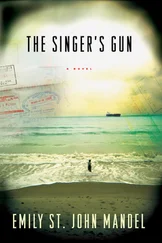
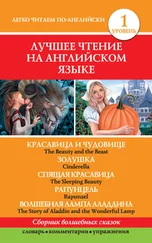
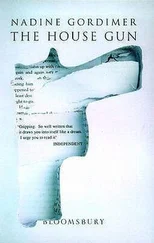

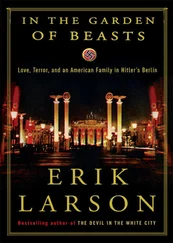

![Ричард Деминг - Whistle Past the Graveyard [= Give the Girl a Gun]](/books/412176/richard-deming-whistle-past-the-graveyard-give-t-thumb.webp)
